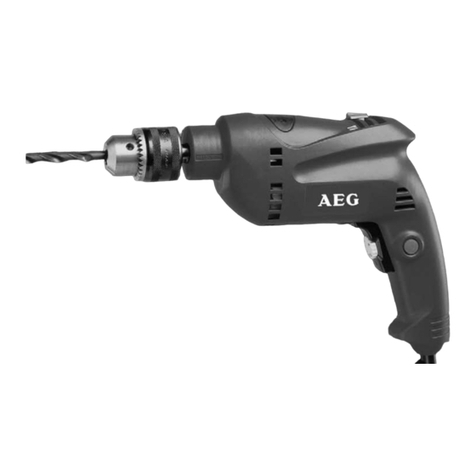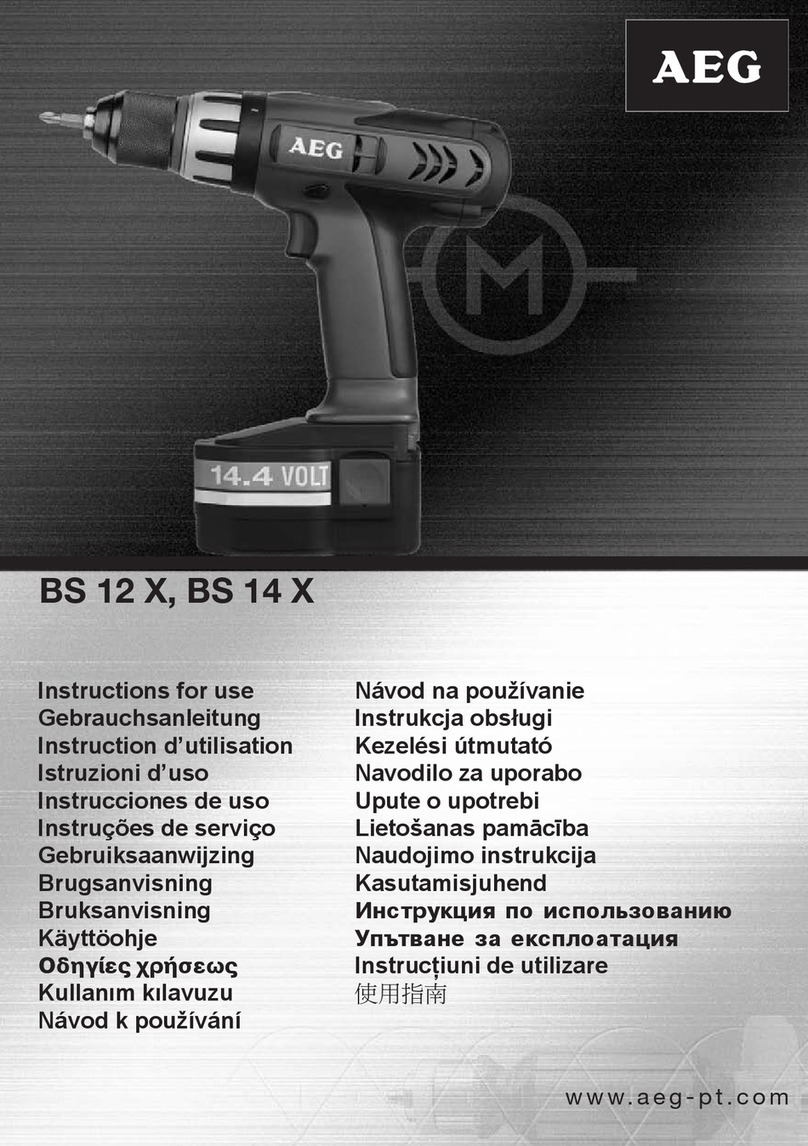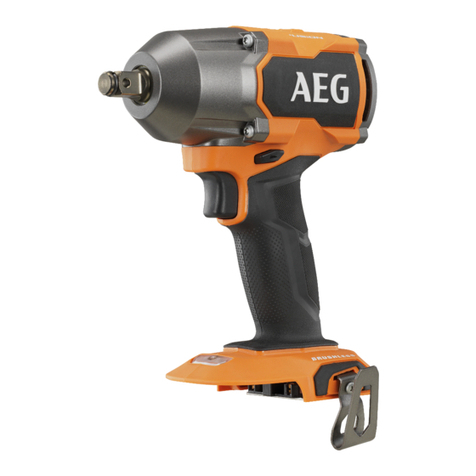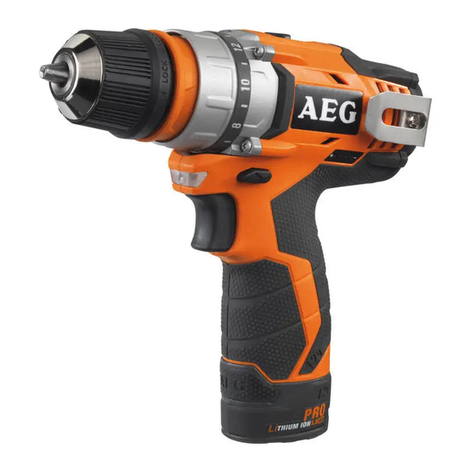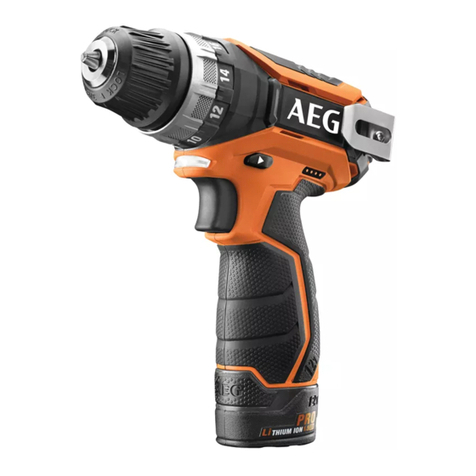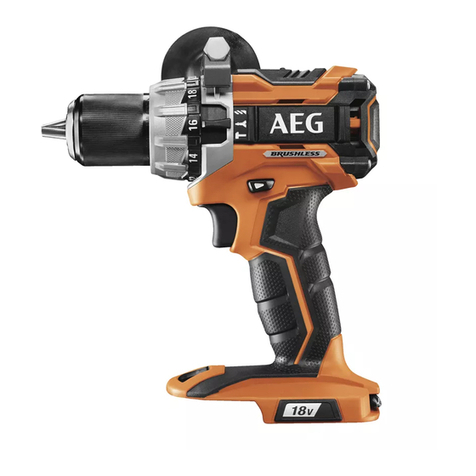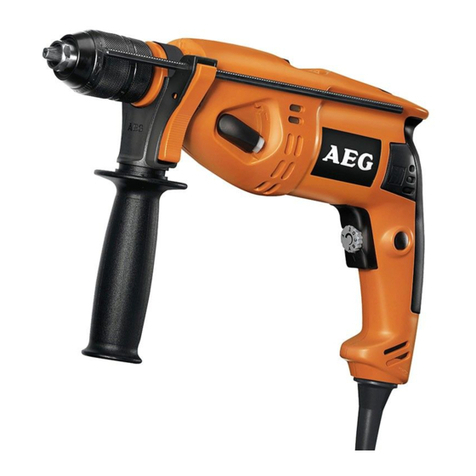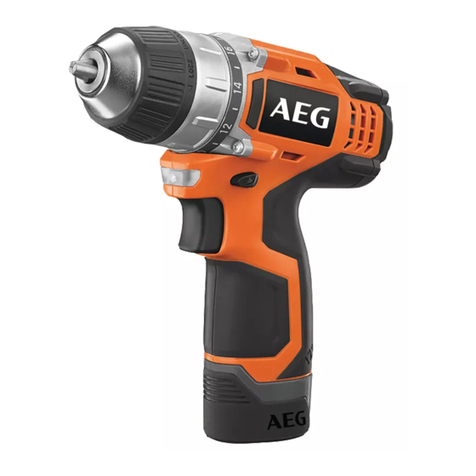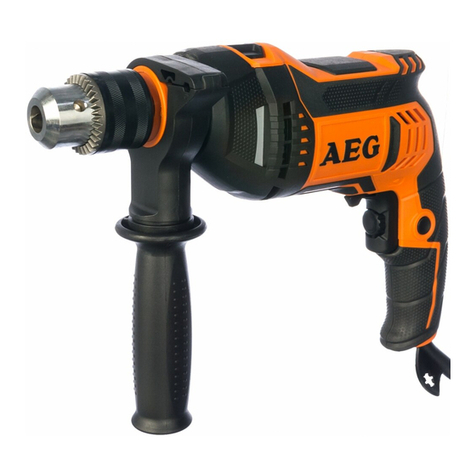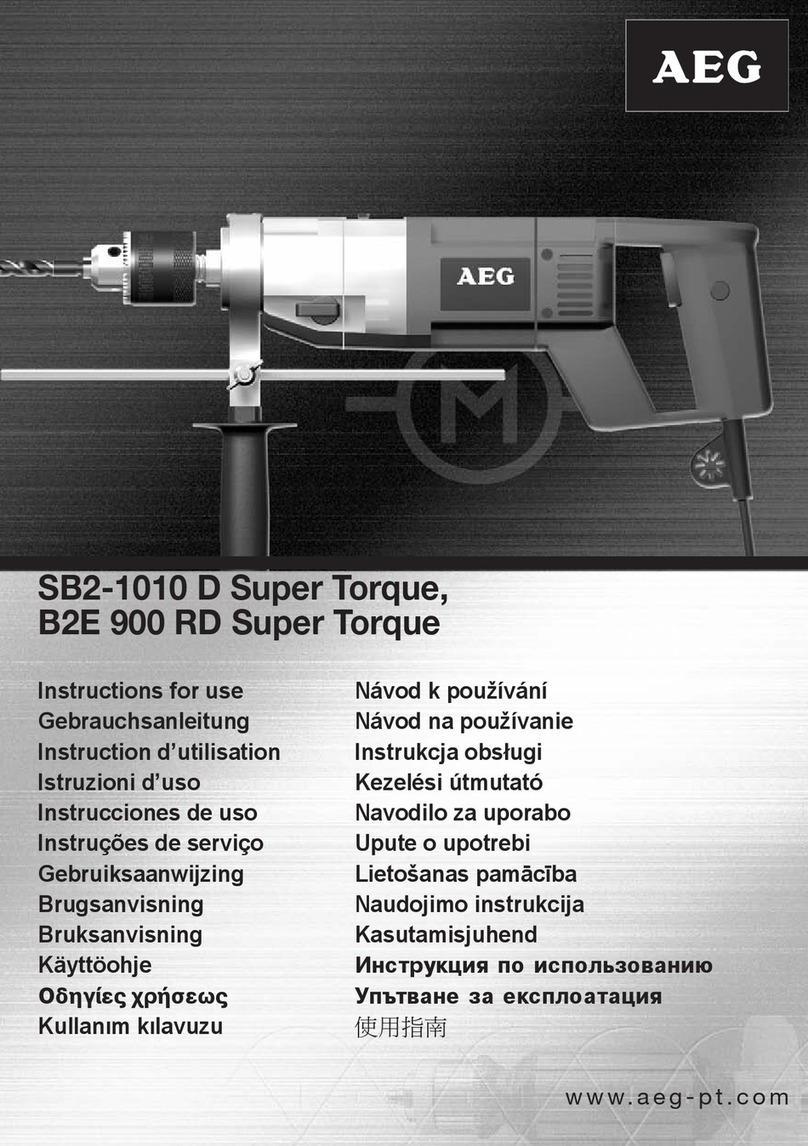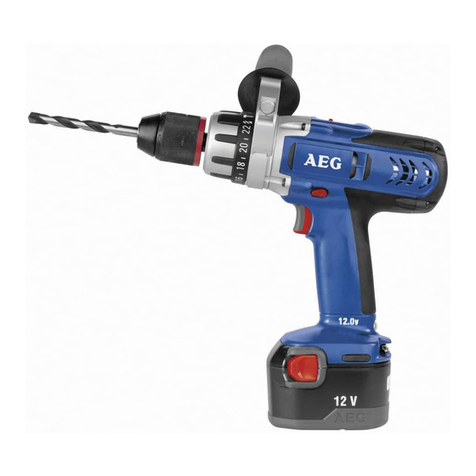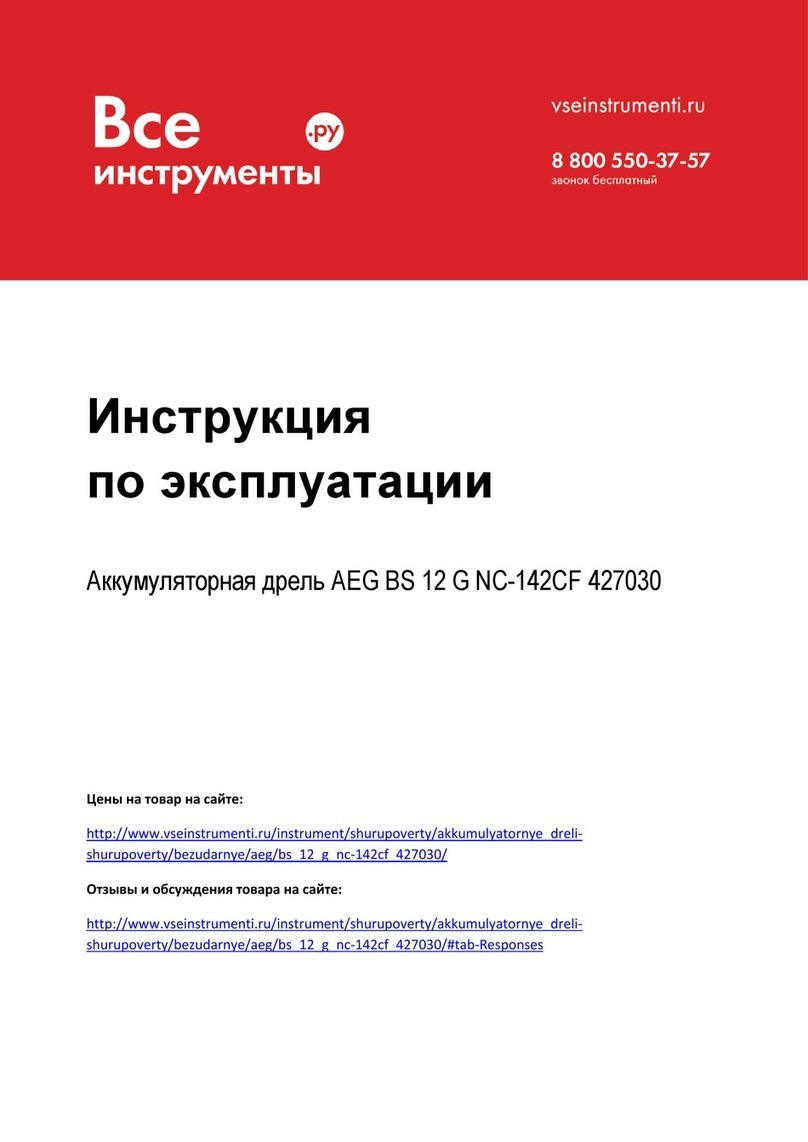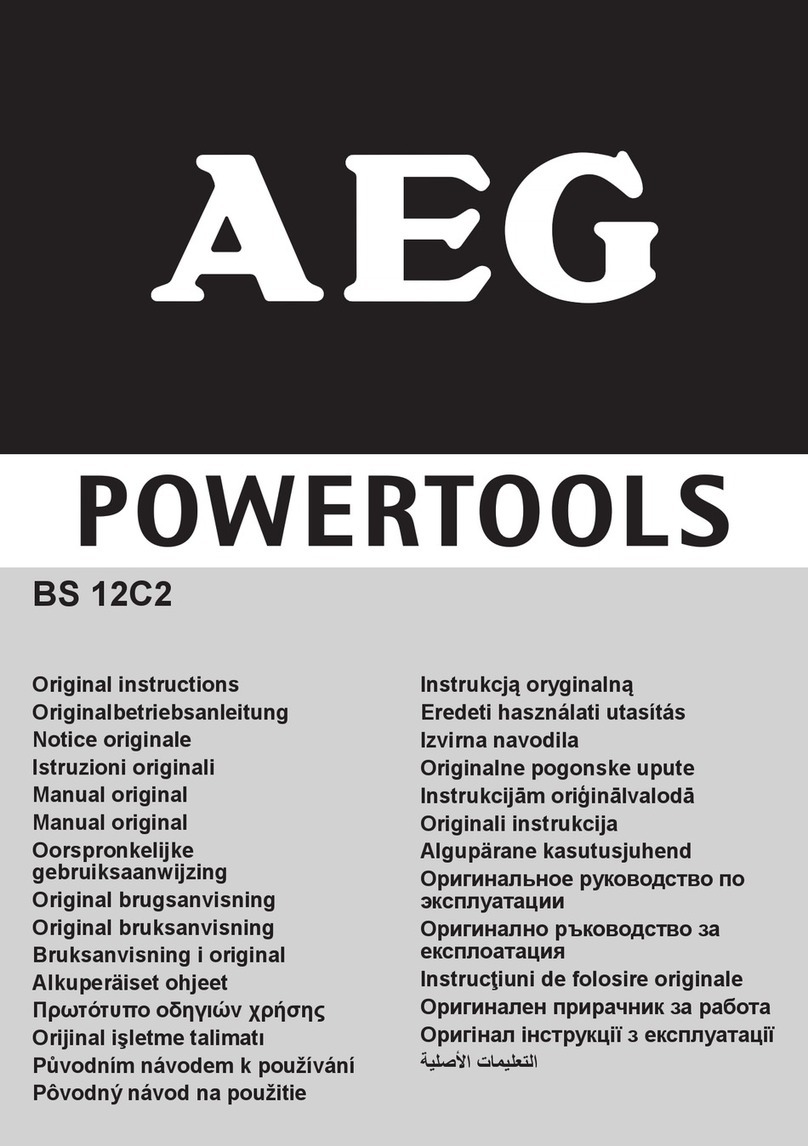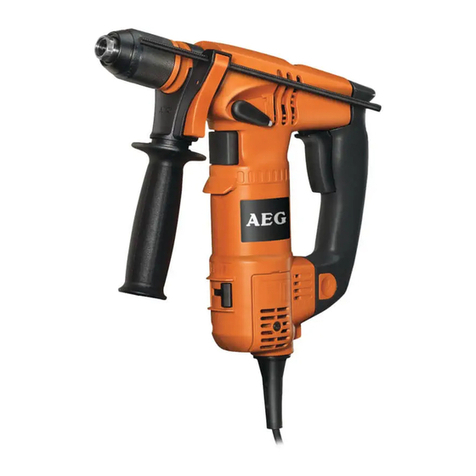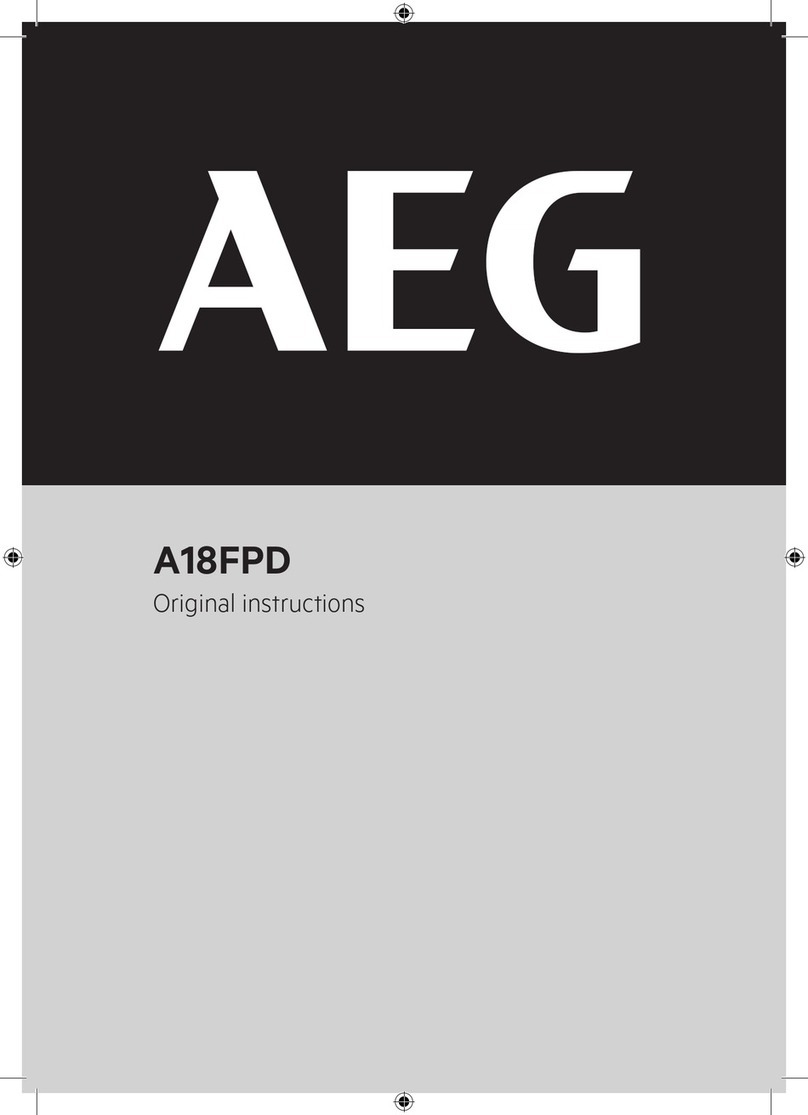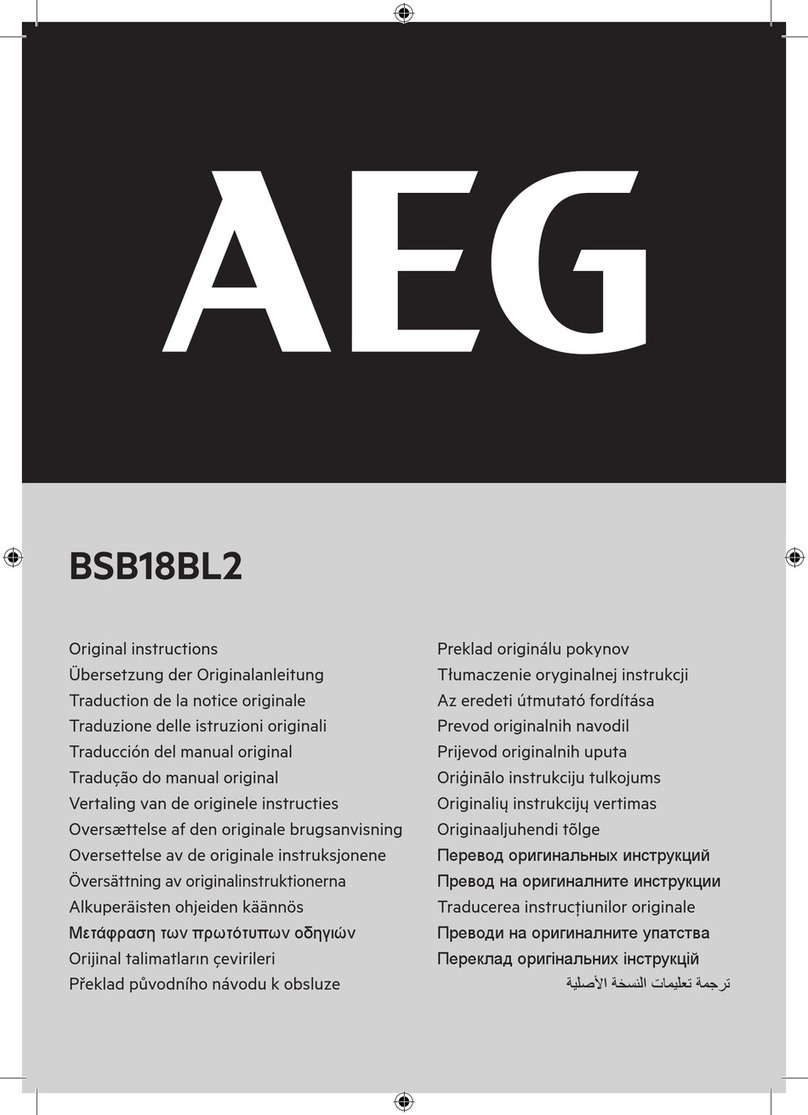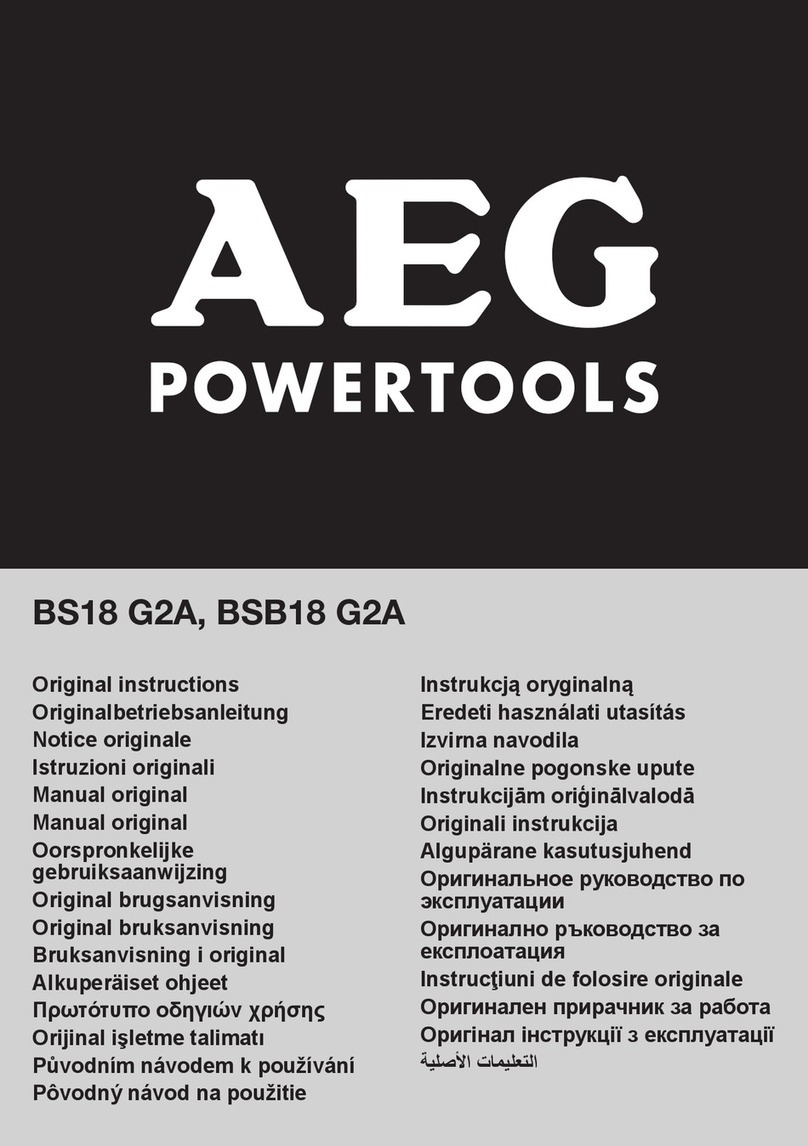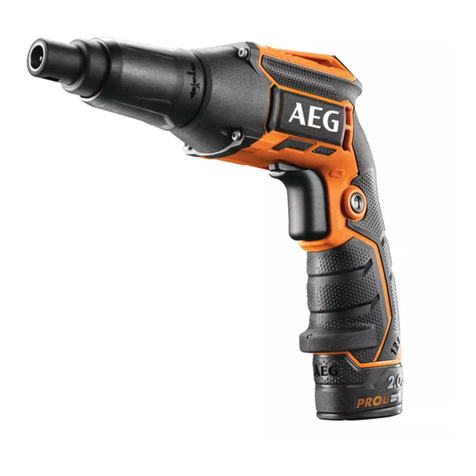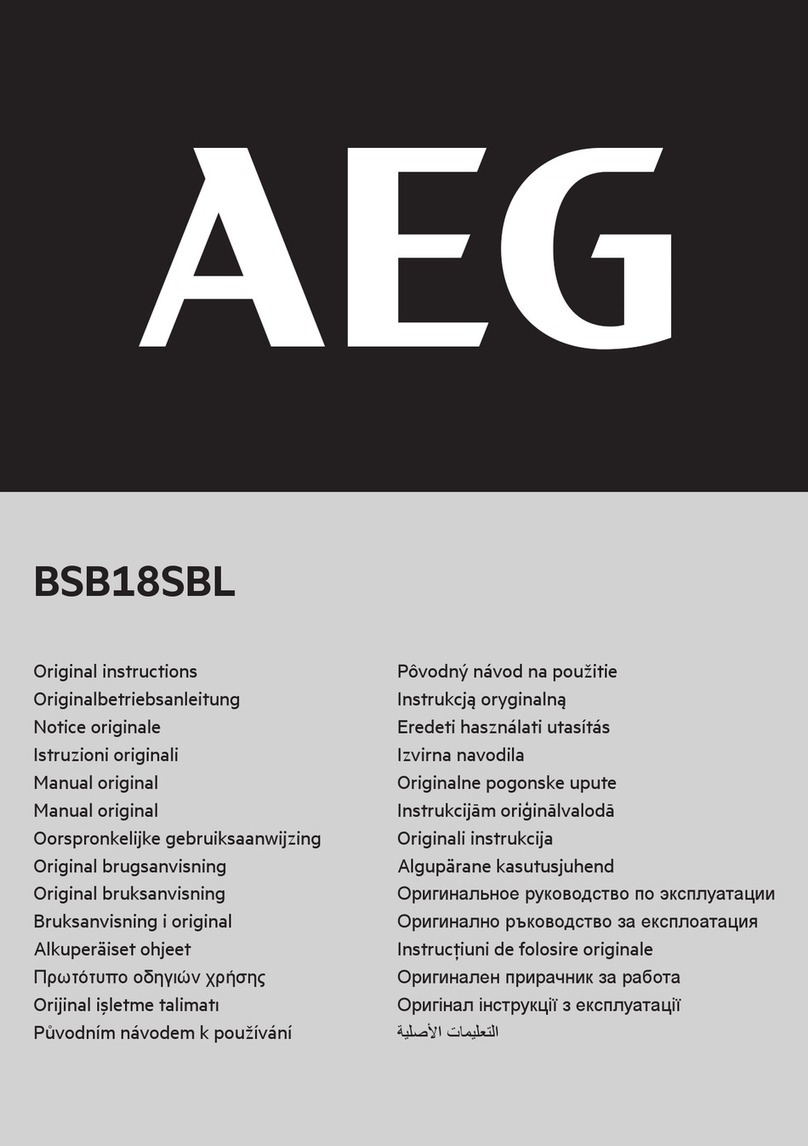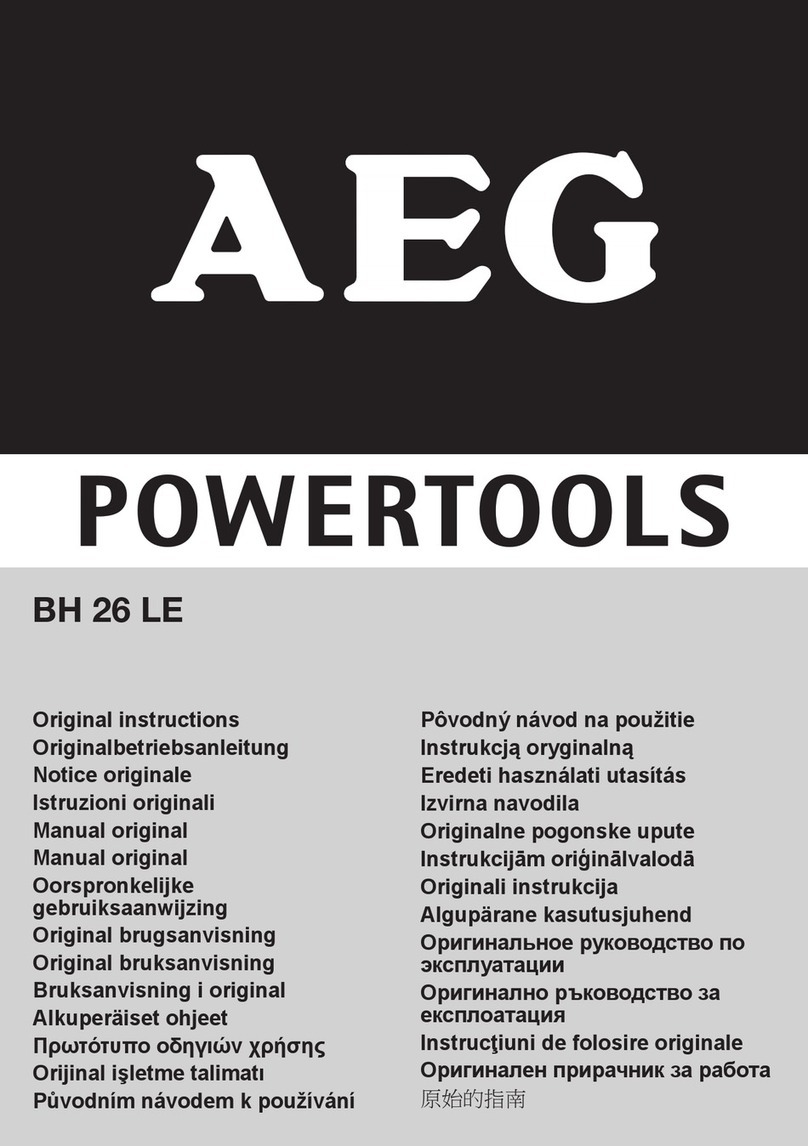
7
DEUTSCH SBE 600 R, SB2E 680 R, SB2-700, SB2E 700 R, SB2E 700 RS, SB2E 705 PLUS, SB2E 750 R, SB2E 760 R
Sie sind anspruchsvoll und erwarten Qualität, die Ihnen Atlas Copco bietet.
Für Sie haben wir ein haltbares und möglichst sicheres Elektrowerkzeug gebaut.
Bitte lesen Sie vor Inbetriebnahme Ihres Gerätes die Gebrauchsanleitung, um Ihr
Elektrowerkzeug effektiv und gefahrlos nutzen zu können.
Wir sind sicher, daßSie mit AEG-Elektrowerkzeugen von Atlas Copco Ihre richtige
Wahl getroffen haben.
SBE 600 R SB2E 680 R SB2–700
Nennaufnahme 600 W 705 W 700 W. . . . . . . . . . . . . . . . . . . . . . . . . . . . . . .
Leerlaufdrehzahl 0–3100 min-1
. . . . . . . . . . .
1. Gang 0–1350 min-1 1500 min-1
. . . . . . . . . . . . . . . . . . . . . . . . . . . . . . . . . . . . . .
2. Gang 0–3200 min-1 3600 min-1
. . . . . . . . . . . . . . . . . . . . . . . . . . . . . . . . . . . . . .
Schlagzahl max. 49600 min-1 51200 min-1 51200 min-1
. . . . . . . . . . . . . . . . . .
Bohr-øin
Beton 20 mm 20 mm 20 mm. . . . . . . . . . . . . . . . . . . . . . . . . . . . . . . . . . . . . .
Ziegel und Kalksandstein 20 mm 24 mm 24 mm. . . . . . . . . . . . . . . . . . . . .
Stahl 13 mm 13 mm 13 mm. . . . . . . . . . . . . . . . . . . . . . . . . . . . . . . . . . . . . . .
Holz 35 mm 40 mm 40 mm. . . . . . . . . . . . . . . . . . . . . . . . . . . . . . . . . . . . . . . .
Bohrfutterspannbereich 1,5-13 mm 1,5-13 mm 1,5–13 mm. . . . . . . . . . . . . .
Bohrspindel 1/2”x20 1/2”x20 1/2”x20. . . . . . . . . . . . . . . . . . . . . . . . . . . . . .
Spannhals-ø43 mm 43 mm 43 mm. . . . . . . . . . . . . . . . . . . . . . . . . . . . . . . . . .
Gewicht 1,9 kg 2,2 kg 2,2 kg. . . . . . . . . . . . . . . . . . . . . . . . . . . . . . . . . . . . . . . .
SB2E 700 R SB2E 750 R SB2E 760 R
SB2E 700 RS
SB2E 705 PLUS
Nennaufnahme 705 W 750 W 760 W. . . . . . . . . . . . . . . . . . . . . . . . . . . . . . .
Leerlaufdrehzahl
1. Gang 0–1350 min-1 0–1350 min-1 0–1350 min-1
. . . . . . . . . . . . . . . . . . . . . .
2. Gang 0–3200 min-1 0–3200 min-1 0–3200 min-1
. . . . . . . . . . . . . . . . . . . . . .
Schlagzahl max. 51200 min-1 51200 min-1 51200 min-1
. . . . . . . . . . . . . . . . . .
Bohr-øin
Beton 20 mm 20 mm 20 mm. . . . . . . . . . . . . . . . . . . . . . . . . . . . . . . . . . . . . .
Ziegel und Kalksandstein 24 mm 24 mm 24 mm. . . . . . . . . . . . . . . . . . . . .
Stahl 13 mm 13 mm 13 mm. . . . . . . . . . . . . . . . . . . . . . . . . . . . . . . . . . . . . . .
Holz 40 mm 40 mm 40 mm. . . . . . . . . . . . . . . . . . . . . . . . . . . . . . . . . . . . . . . .
Bohrfutterspannbereich 1,5–13 mm 1,5–13 mm 1,5-13 mm. . . . . . . . . . . .
Bohrspindel 1/2”x20 1/2”x20 1/2”x20. . . . . . . . . . . . . . . . . . . . . . . . . . . . . .
Spannhals-ø43 mm 43 mm 43 mm. . . . . . . . . . . . . . . . . . . . . . . . . . . . . . . . . .
Gewicht 2,5 kg 2,5 kg 2,5 kg. . . . . . . . . . . . . . . . . . . . . . . . . . . . . . . . . . . . . . . .
JSicherheitshinweise der beiliegenden Broschüre beachten!
JStaub der bei der Bearbeitung von asbesthaltigen Materialien und Gestein mit
kristalliner Kieselsäure entsteht, ist gesundheitsschädlich. Beachten Sie die
Unfallverhütungsvorschriften VBG 119 der Berufsgenossenschaft.
JSteckdosen in Außenbereichen müssen mit Fehlerstrom-Schutzschaltern
ausgerüstet sein. Das verlangt die Installationsvorschrift für Ihre Elektroanlage. Bitte
beachten Sie das bei der Verwendung unseres Gerätes –sprechen Sie mit Ihrem
Elektroinstallateur.
JBeim Arbeiten mit der Maschine stets Schutzbrille tragen. Schutzhandschuhe, festes
und rutschsicheres Schuhwerk und Schürze werden empfohlen.
JSpäne oder Splitter dürfen bei laufender Maschine nicht entfernt werden.
JGehäuse der Maschine nicht anbohren, da sonst die Schutzisolierung unterbrochen
wird (Klebeschilder verwenden).
JVor allen Arbeiten an der Maschine Stecker aus der Steckdose ziehen.
Maschine nur ausgeschaltet an die Steckdose anschließen.
JAnschlußkabel stets vom Wirkungsbereich der Maschine fernhalten. Kabel immer
nach hinten von der Maschine wegführen.
JStets den Zusatzhandgriff verwenden. Dies gilt auch bei Maschinen mit
Sicherheitskupplung, da diese Sicherheitskupplung nur bei ruckartigem Blockieren
anspricht.
JBei Arbeiten mit Diamantbohrkronen Schlagwerk ausschalten.
JBeim Bohren in Wand, Decke oder Fußboden auf elektrische Kabel, Gas- und
Wasserleitungen achten.
Vorwort
Technische
Daten
Hinweise für
Ihre Sicherheit
